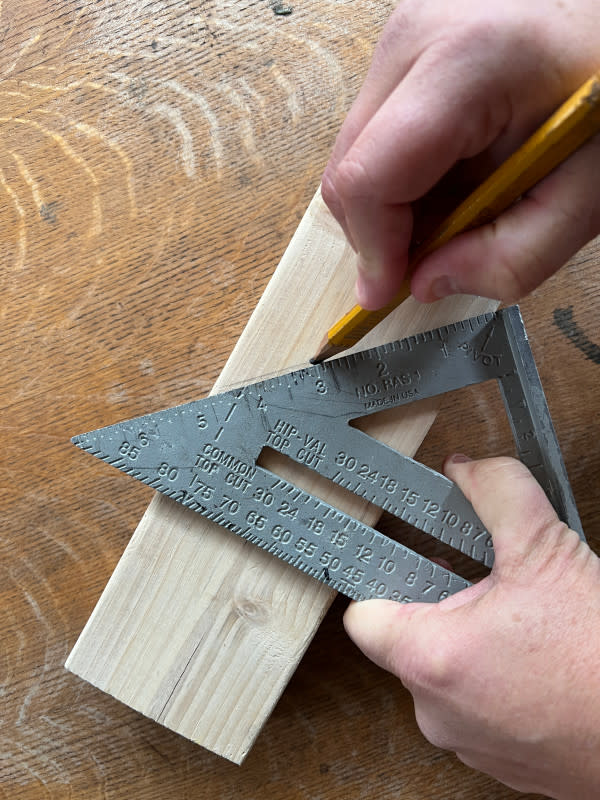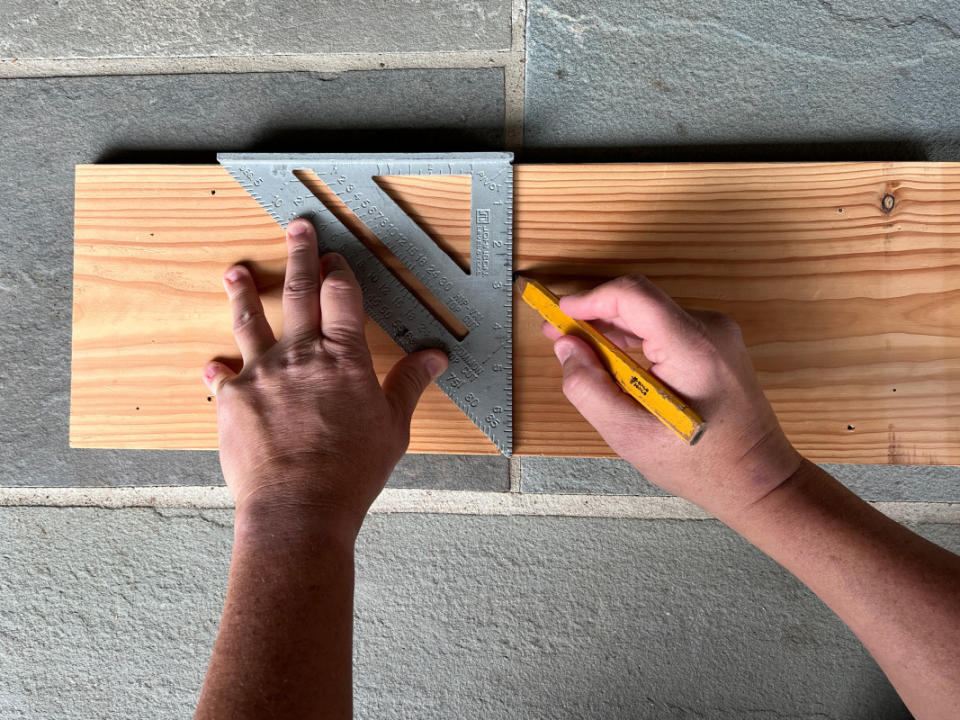7 Uses For a Speed® Square
Men’s Journal aims to feature only the best products and services. If you buy something via one of our links, we may earn a commission.
In the realm of woodworking, construction, and DIY projects, the Speed® square is a humble tool. It’s one you might use on every project—versatile, efficient, and easy to keep in your toolbox.
Initially developed by Albert Swanson, the traditional Swanson® Speed® Square was created as a tool that satisfied the job of five for common framing and carpentry tasks.
Since its invention in 1925, it has found its way into the hands of professional craftsmen and regular ol’ handy persons, just like us. With its precise scales and lipped edge, it’s good for much more than scribing straight lines. We might even brag about how much we love the darn thing every time we use it. But, are we really making the most of it?
Explore all the ways a square can simplify your next project and elevate your craftsmanship. From precise measurements to intricate angle calculations, it might just be more powerful than you realize.
Square Cuts
Okay, you’re probably doing this one right. One of the most standard, basic uses of a Speed® square is ensuring square cuts. Use the square's 90-degree corner to check and mark angles. This helps ensure that your cuts are perfect when working with lumber, drywall, or other materials.
Projects that require square cuts:
Construction of walls
Installing hardwood, laminate or vinyl floorboards
Marking cuts on drywall (you’ll want a 48” T-Square for that, too)
Measuring and Marking Angles
Look closer at your square and notice that there are other angle markings aside from the 90-degree angle. These are handy for measuring and marking angles consistently and accurately. Simply align the square with the material, and can mark precise angles as quickly as you would if you were using a protractor.
Projects where you’ll master marking angles:
Cutting your own angles for stair stringers
Crafting angled joints for chairs, tables, or other custom furniture
Learning to mark and cut angles for beams and rafters for a DIY pergola

Emily Fazio
Centering Measurements
Did you know you can find the center of a board quickly with the help of a Speed® square? The trim square is a model that does that. You can also use it to mark equal distances from the edges.
Projects made easier by simple centering:
Predrill into the center of a wall stud using the drill guides
Installing drawer handles or knobs at equal intervals
Hanging shelf brackets
Saw Guide
Speed® squares are helpful as a saw guide when making straight cuts with a circular saw or jigsaw. Align the square with the edge of the material and then run your saw along the square's straight edge for accurate and straight cuts.
Projects where a saw guide is helpful:
Precise cuts for door casings, window trim, and baseboards
Cutting straight lines in sheet metal or aluminum for metalworking projects
Stabilize the path for a jigsaw or reciprocating saw
Roofing Layout and Layout Tool
Rafter squares are essential for roofing tasks. They can help with tasks like finding common rafter lengths, marking plumb cuts, and determining the pitch of a roof. Roofers often use these tools to make critical measurements and layout marks when installing shingles or other roofing materials.
Roofing projects made easier:
Find the pitch of the roof
Mark common, hip, valley and hip, or valley jack rafters
Determine Essex board measure

Emily Fazio
Scribing Lines
When you need to draw perfectly straight or curved lines, a square can serve as a guide for scribing. Make parallel lines by running a pencil or marking tool along one edge of the square, while keeping the lipped edge against the material.
You can also use pre-measured scribe points on the tool. They hold your pencil precisely in place while sliding the triangle along a straight edge! It gets better, too. You can even rotate the square on a nail to make precise curved lines.
Projects where scribing is helpful:
Mark straight lines
Mark angled or rounded cuts
Mark on-center drill points
Proportional Scales
Some squares are etched with a proportional scale. This allows you to make quick and accurate calculations when resizing or scaling down measurements.
Projects that use a proportional scale:
Reducing or enlarging plans
Scribe measurements while maintaining accurate proportions

